Our Cat Person of the Month for December is Anthropologist Dr. Florkiewicz.
Did you see the news? Scientists discovered that house cats make a surprisingly high number of facial expressions toward other cats. The number of cats’ facial expressions—276 to be exact—was much higher than what people had previously thought cats were capable of (Leste-Lasserre, 2023).
To study expressions, the scientists—Lauren Scott and Dr. Britt Florkiewicz—used a facial coding system similar to coding systems used to measure primates and other animals’ facial signals (Scott & Florkiewicz, 2023). In the case of the cats, signals included parted lips, dilated or constricted pupils, blinks, jaw dropping, lip movements, nose licks, and changes in ear or whisker positions. The study results suggest that cats are not the aloof, independent creatures many people make them out to be.
Meet Cat Person of the Month, study investigator and feline researcher Dr. Britt Florkiewicz. Dr. Florkiewicz is the Principal Investigator and Founder of the Lyon College Animal Behavior & Cognition Lab. She earned her B.A. in Anthropology from the University of North Carolina Wilmington in 2014, her M.A. in Anthropology from Southern Illinois University Carbondale in 2016, and her Ph.D. in Anthropology from the University of California Los Angeles in 2022
Dr. Florkiewicz’s work focuses on how animals develop and use facial expressions in social situations, as well as how animals use language and gestures to communicate. She has studied a variety of primates (such as gibbons, orangutans, gorillas, and chimpanzees), dogs, and now… cats.
Mewla: Welcome, Dr. Florkiewicz! I read in a CNN interview that you and Lauren Scott believe cats who showed more expressions may have made more successful appeals to humans (Khalil, 2023). Do you think that house cats may have, over time, learned to mirror the facial expressions of their human caregivers, similar to human babies that mirror the facial expressions of their caregivers? Or, do you suppose that humans steered the evolution in that people were more likely to feed cats whose faces appealed to them?
Dr. Florkiewicz: Both of these ideas are plausible! Previous studies have found that dogs who make facial expressions that enhance their ‘neonatal’ (or baby-like) appearance were much more likely to be adopted (Waller et al. 2013).
We also know that human attention alters the facial expressivity of dogs (Kaminski et al., 2017). It is very possible that these mechanisms extend to cats! We know that many animals rapidly mirror the facial expressions of others. However, most of this work has focused on how members of the same species mimic facial expressions. We need additional research to see whether facial mirroring can occur between members of different species.
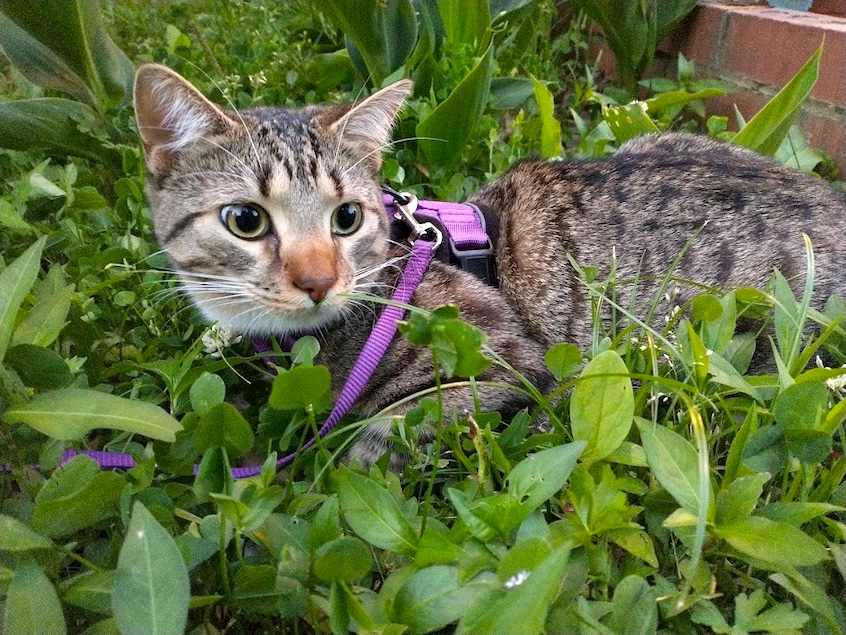
These are all excellent questions that members of the Animal Behavior and Cognition Lab will be addressing in the coming years.
Mewla: Your research is so interesting. Some of the findings made sense to me. For example, cats generally move their ears and whiskers toward another cat when they are being friendly, but when cats are being unfriendly, they often lick their lips and move their ears and whiskers away from the other cat. Were any of the facial signals (or their meanings) a surprise to you?
Dr. Florkiewicz: We were surprised to see that pupil constriction and lip licking were associated with unfriendly interactions. These movements were different than those typically associated with unfriendly interactions between cats and humans.
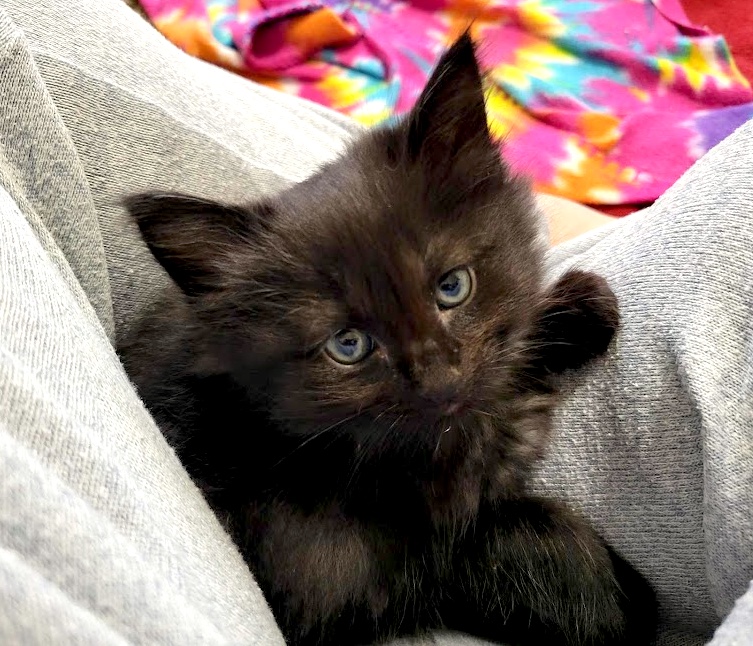
Oftentimes, we (as humans) think of unfriendly cat expressions as hisses, where the cat’s mouth is widely opened and the teeth are exposed. In these depictions, the pupils are dilated and the ears are flattened backward. But cats typically looked different from this when they were being unfriendly toward other cats, suggesting that the audience makes a difference. Depending on the recipient, cats will adapt their facial expressions accordingly.
Mewla: Very cool! I also read that cats vocalize more often to humans than to other cats and that cats’ meows are higher in pitch when they meow to humans (Yeon, 2011). To me, cats’ vocalizations sound similar to babies’, and their meows definitely trigger my maternal instinct to care for them. Can you speak to this?
Dr. Florkiewicz: My work focuses mainly on facial expressions rather than vocalizations. However, I can provide a brief evolutionary perspective on this question. Signals are often comprised of features that ‘exploit’ the sensory systems of the given species. For example, the frequency of human language falls within our hearing range.
Cat vocalizations may have evolved to exploit the sensory systems of humans. Previous studies have found that infant crying is “perceived by mothers as an emotionally significant signal that requires their attention” and is used to solicit attention and resources (Carollo et al., 2023; also see Soltis, 2004).
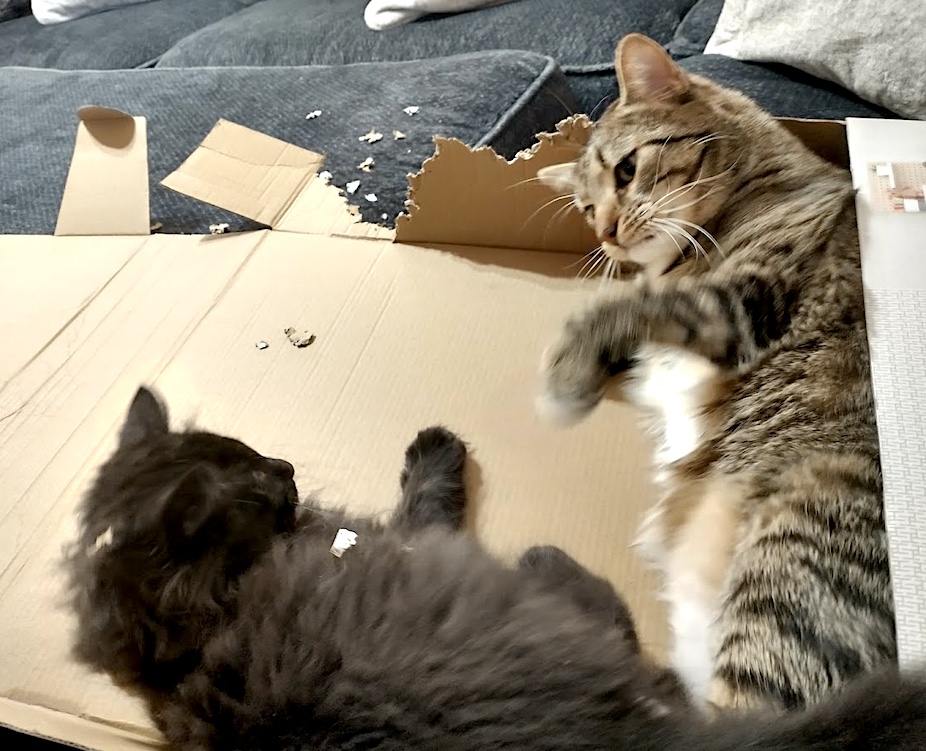
By vocalizing in a way that mimics infant crying, cats can get attention, food, and care from humans. However, additional studies would be needed to test this idea.
Mewla: Is there research that looks at how accurate humans are at interpreting cats’ facial expressions?
Dr. Florkiewicz: There have been a few studies that look at the physical form of facial expressions produced by cats for humans. Most of these studies have focused on the cat’s perspective, though. For example: one study (Bennett et al., 2017) examined the facial correlates of emotional behavior in shelter cats. However, this study only looked at how cats respond to humans. I know of a few upcoming studies that will evaluate how accurately humans can interpret feline facial expressions. We need more studies on cat facial expressions!
Mewla: I agree! I saw that Leste-Lasserre (2023) quoted behavioral biologist Georgia Mason saying that your results could potentially be used one day to create an app that helps people read cats’ expressions. Has anyone approached you about this?
Dr. Florkiewicz: Yes! I am collaborating with a research group (that has previously published on feline facial expressions of pain) to develop this program.
Mewla: That’s so great! I think an app would really help people better understand what cats might be thinking or feeling. I’d guess my cats will communicate that want more food, lol. Do you think the world is ready to know what our cats want from us?
Dr. Florkiewicz: I think this information would be very useful to pet owners and enthusiasts!
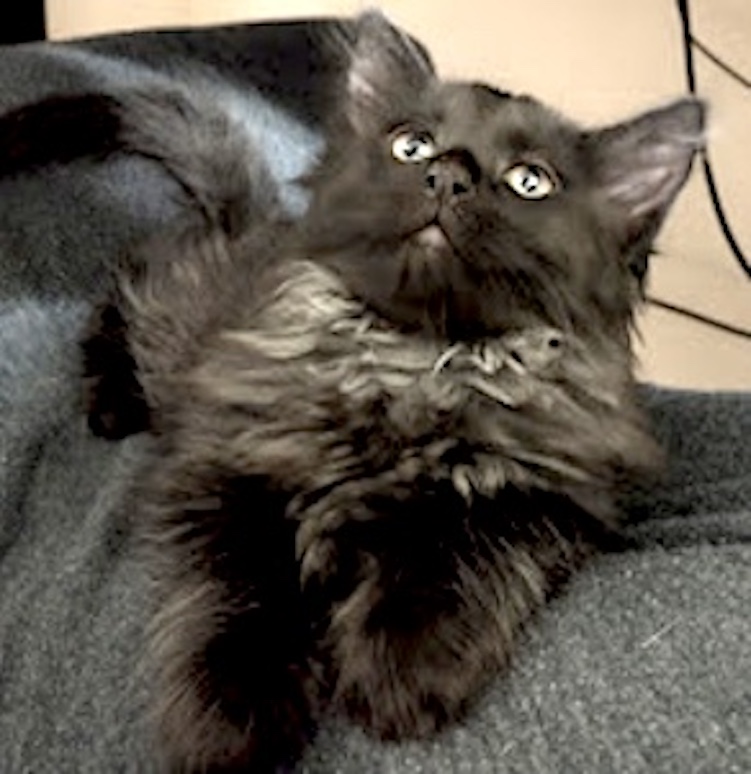
Mewla: Absolutely! And are you planning more research on cats in the future?
Dr. Florkiewicz: Yes. We have many studies lined up on cat facial expressions for the next few years! In addition to developing applications for the automatic recognition of cat facial expressions, we also plan to conduct additional studies to assess the more nuanced meaning of cat facial expressions. We are also planning to conduct studies comparing the facial expressions of different domesticated cat populations and wildcat populations.
Mewla: I’d be curious to see if house cats have developed more “human-like” facial expressions compared to their wild counterparts. That’s so fun to think about.
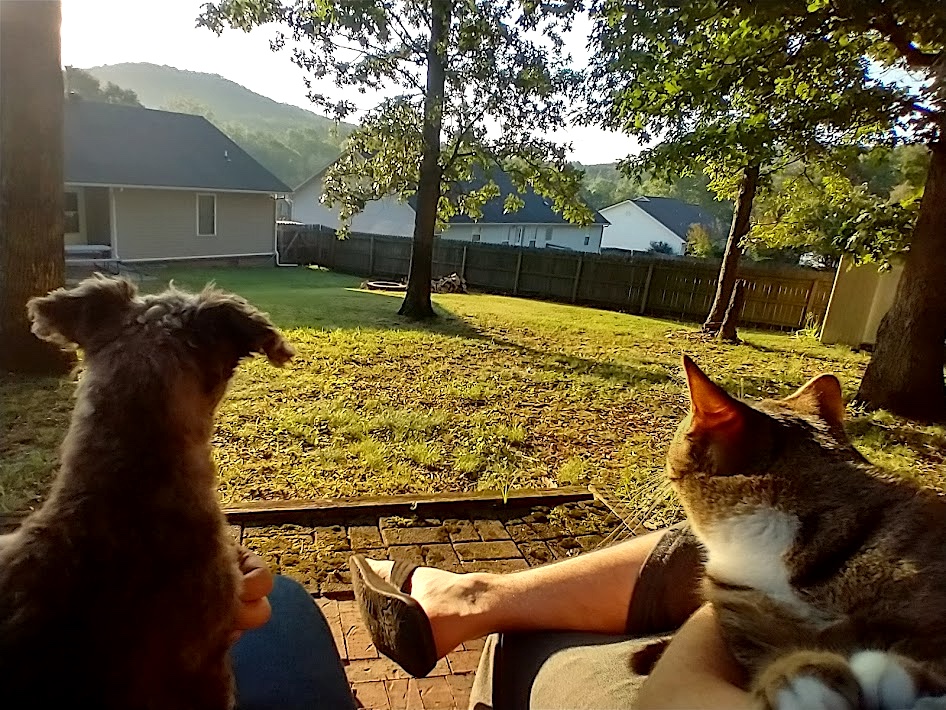
I read in the Smithsonian article that you had been a dog lover and only adopted cats in the past few years. How would you compare your own cats’ ability to communicate with you to that of dogs?
Dr. Florkiewicz: My pets communicate with me through body language, facial expressions, and vocalizations. While all of my pets are very expressive, it’s clear that my cat’s facial expressions look vastly different from my dog’s.
For example, when my cats anticipate a treat, they open their mouths slightly and produce a high-pitched meow. My cats’ ears are pointing forward and their tail is straight up in the air. When my dog eagerly anticipates a treat, she opens her mouth wide, sticks out her tongue, pants, and wags her tail.
Mewla: Tell us about your fur babies!
Dr. Florkiewicz: I currently have 6 fur and scale babies! Two cats (Char and Vader), one dog (Coco), one Russian Tortoise (named Eggbert), and two yellow-bellied sliders (Ponyo and Nausicaa). I adopted Coco a couple of years ago, Char one year ago, and Vader shortly after Halloween. I adopted Eggbert in 2015 and have had my turtles since 2012-2013. As an avid animal lover, I love to spoil my fur and scale babies. My house is mostly comprised of dog and cat beds, scratching posts, pet toys, and more.
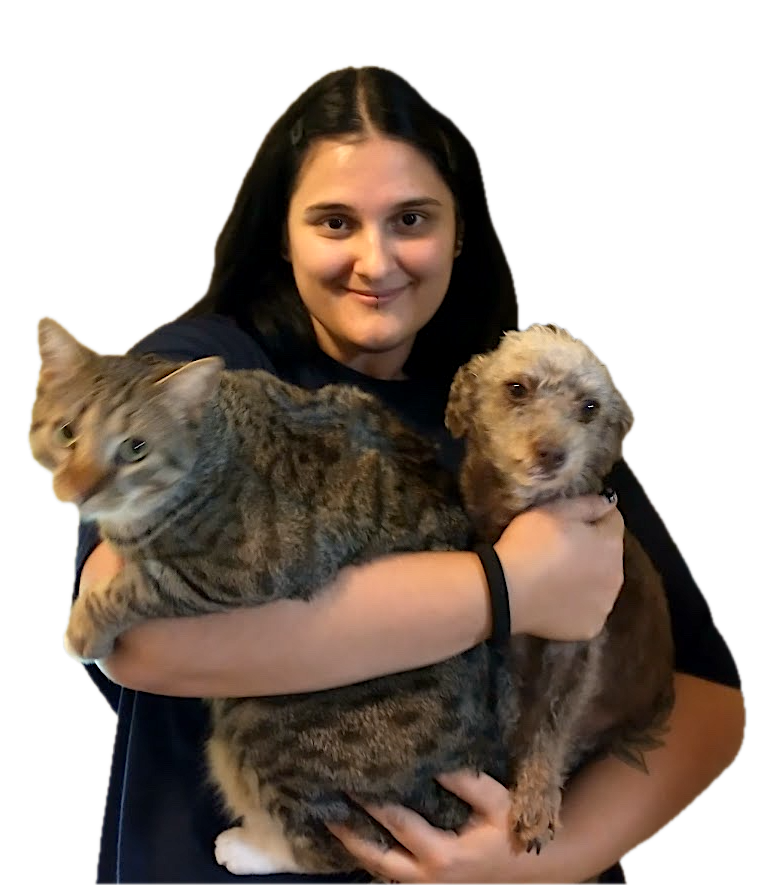
Mewla: LOL, an animal-centered home, like mine. I love it! Thank you so much for joining us Dr. Florkiewicz!
Dr. Florkiewicz: Thank you for having me! I greatly appreciate it. 😊
Mewla: Where can readers go to learn more about your research?
Dr. Florkiewicz: If you want to learn more about my work, please visit my website: https://www.florkie.com/
Please leave your comments or questions about
the Dr. Brittney Florkiewics article below.
REFERENCES:
- Bennett, V., N. Gourkow, and D.S. Mills, Facial correlates of emotional behaviour in the domestic cat (Felis catus). Behavioural Processes, 2017. 141: p. 342-350 https://pubmed.ncbi.nlm.nih.gov/28341145/
- Carollo et al., (2023).A Scientometric Review of Infant Cry and Caregiver Responsiveness: Literature Trends and Research Gaps over 60 Years of Developmental Study. Children (6):1042
- Kaminski, J et al., (2017). Human attention affects facial expressions in domestic dogs. Scientific Reports. https://www.nature.com/articles/s41598-017-12781-x
- Khalil, H. (November, 2023). Cats have 276 different facial expressions, study finds. CNN online. Downloaded November 2023 from https://www.cnn.com/2023/11/01/world/cats-have-276-facial-expressions-intl-scli-scn/index.html
- Leste-Lasserre (October, 2023). Cats Have Nearly 300 Facial Expressions, Science. https://www.science.org/content/article/cats-have-nearly-300-facial-expressions
- Scott, L., Florkiewicz, B. N. (2023). Feline Faces: Unraveling the Social Function of Domestic Cat Facial Signals. Behavioural Processes, 104959, https://doi.org/10.1016/j.beproc.2023.104959.
- Soltis (2004). The signal functions of early infant crying. Brain Behavioral Science. https://pubmed.ncbi.nlm.nih.gov/15773426/.
- Waller et al., (2013). Paedomorphic Facial Expressions Give Dogs a Selective Advantage. Plosone. https://doi.org/10.1371/journal.pone.0082686
- Yeon, S.C., et al., Differences between vocalization evoked by social stimuli in feral cats and house cats. Behavioural processes, 2011. 87(2): p. 183-189. https://www.sciencedirect.com/science/article/abs/pii/S0376635711000568?via%3Dihub




Wow! I am impressed with the depth and breadth of the work done by Dr Britt. We all wish that our fur, scale and feather children could vocalize their needs and wants in some kind of communication system that is clear and easily understood. Well, Dr Britt is making headway in identifying and coding such a system with respect to fur children. This research could mean no more guessing or projecting human conjecture onto our little ones in frustrating “hit and miss” efforts. This is particularly important in times of illness or depression. I can see where this heading, and I am excited with anticipation. Well done Dr Britt and I wish you every success as you move forward.
Congratulations Dr. Britt! Your research is very interesting.
Great article and congratulations to Dr. Britt. I love the idea of cat app!.